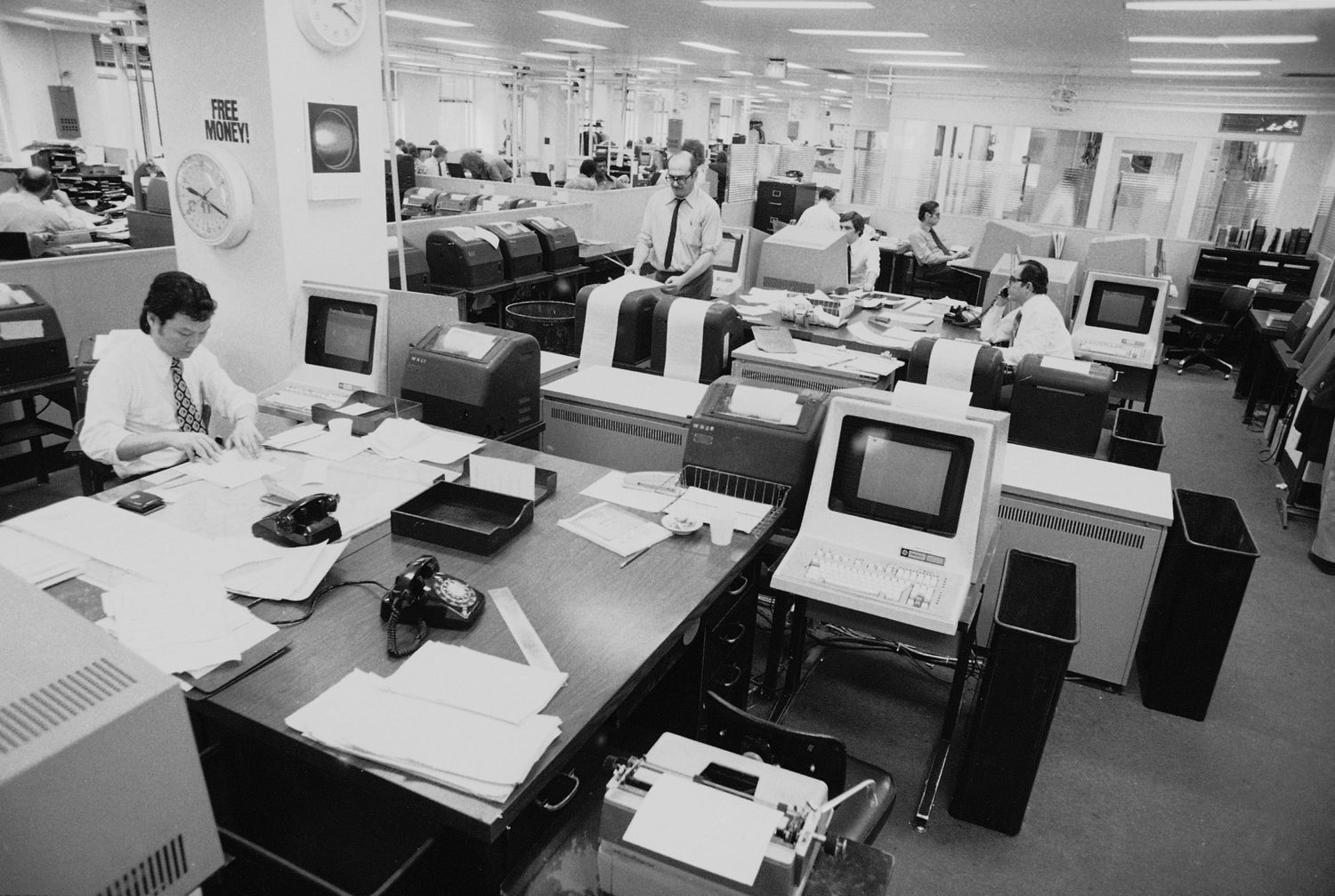For years, newspapers have been downsizing — in coverage, in people, and in buildings.
That continued during the pandemic when both Tribune and McClatchy closed some newspaper office spaces. But newspapers have been leaving iconic, costly buildings for the last decade.
Even Chip and Joanna Gaines found the perfect fixer-upper with Waco’s Tribune-Herald. The Texas newsroom will relocate to a smaller location as the former HGTV couple’s empire gives new life to the old space.
So where do newly office-less newsrooms go? And the new digital newsrooms cropping up in communities that lost news coverage?
Over the past 20 years, journalism has been through waves of transformation — through digital, engagement, social media and more. The goal of informing audiences and supporting democracy remains. But the ways we gather, produce and spread the news has changed.
Maybe it’s time to reimagine the places that work happens, too.
Join Poynter’s Joie Chen for On Poynt: Funding Models for the Future Newsroom, at noon eastern, Thursday, April 22.
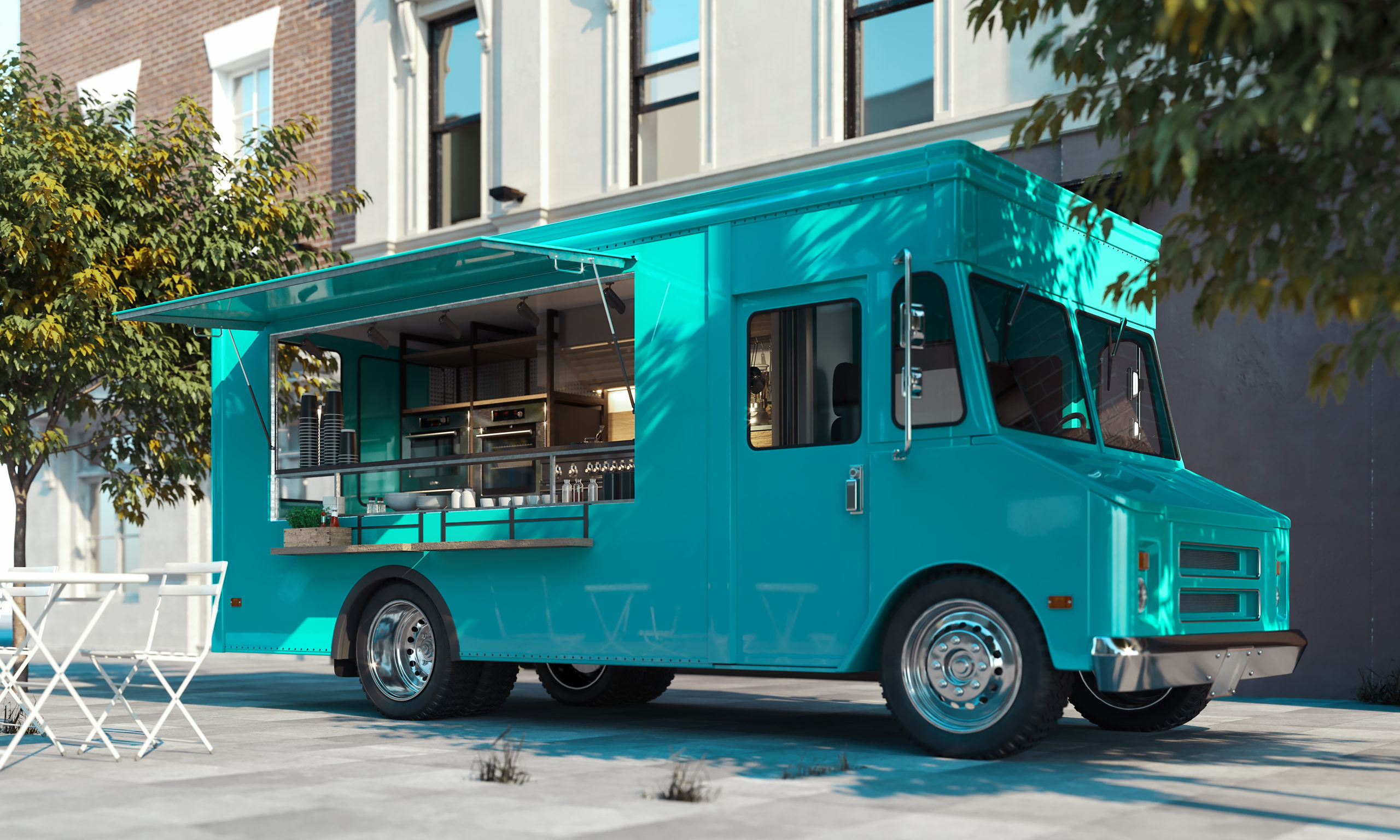
Instead of tacos, news? (Adobe Stock)
We built this city
Buildings are symbolic, said Nikki Usher, a professor at the University of Illinois College of Media and author of the new book, “News for the rich, white and blue.” Newspaper buildings, in particular, once located near the seats of power in downtowns, projected power themselves.
The old Chicago Tribune contains pieces of the Great Wall , a pyramid and the Berlin Wall. The New York Times hovers over one of the world’s most iconic squares, which is named after it. The old Dallas Morning News building was called the “Rock of Truth” for the quote etched into stone out front.
Build the news upon the rock of truth and righteousness. Conduct it always upon the lines of fairness and integrity. Acknowledge the right of the people to get from the newspaper both sides of every important question.
“The question is is that really the image that news organizations need to continue to project to maintain their authority?” she asked. “I think it’s in some ways really important to say we’re still here and we’re still powerful. On the other hand, that might not be the best for all residents.”
Knowing where news gets made is orienting, she said, even if people don’t follow the news. But one of the quickest ways to offload debt and cut costs is to sell those big buildings – a move we saw happen several times during the pandemic.
Maybe it would be better to take up storefronts around a city in different neighborhoods, Usher said. Maybe we need taco trucks on regular neighborhood rotations, but with a newsroom inside.
“We have the tech to do that,” she said.
Communities need to have access to the newsrooms that serve them, said Danielle Kilgo, a professor at the University of Minnesota’s Hubbard School of Journalism & Mass Communication.
“It’s important that journalists can be seen and that people know where they come from,” she said. “There’s a lot of value in having a space where people can recognize that this is where journalists are.”
But that space could be more flexible, like Sahan Journal editor Mukhtar M. Ibrahim’s idea of holding weekly editorial meetings in the offices of organizations around Minneapolis that serve the communities they cover.
2020 showed newsrooms that they could work outside of newsrooms. But we don’t all have to work from home either.
What about …
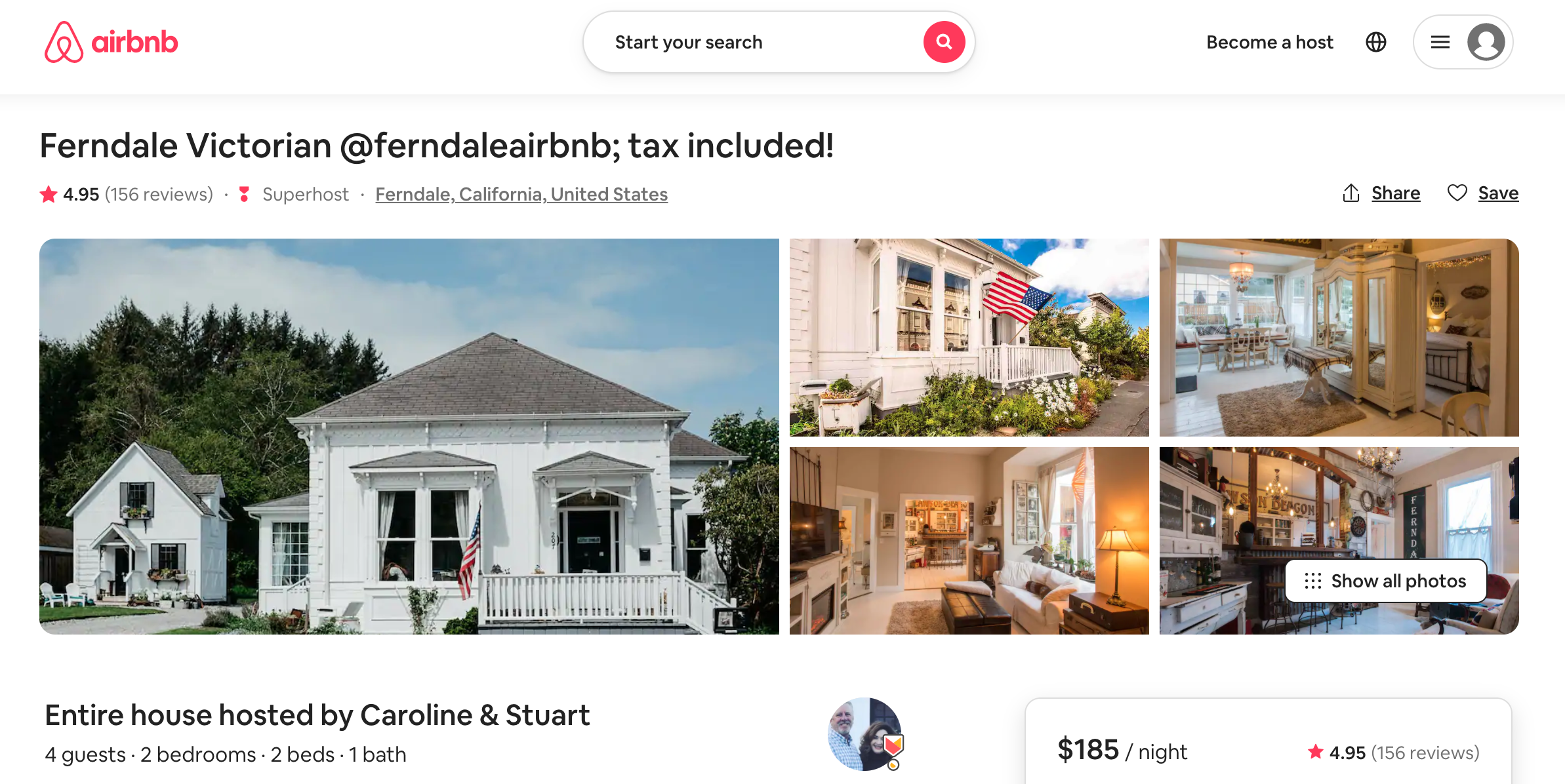
Screen shot, Airbnb
An Airbnb. Or a coffee shop.
Caroline Titus didn’t move the Ferndale (California) Enterprise into an old Victorian home. The paper’s second owner built the house and the office next door in 1884.
Titus just made it into income property.
When the pandemic shut everything down, that meant the two units she rented out on Airbnb, including part of the Victorian, had to close, too.
“We have subsidized the Ferndale Enterprise for the last five years by renting out our newspaper office/home as a vacation rental,” Titus wrote on the newspaper’s Instagram account. “Now, with the shelter-in-place order, we have had to close our two vacation rentals and have cancelled all bookings for April-June and probably will have to cancel more. For the city of Ferndale, that means we aren’t collecting ‘bed taxes’ from our guests to pass on to the city to help pay for a variety of city services that we all benefit from. So, because of the pandemic: the newspaper suffers, our vacation rental income is zip, and the city’s coffers will be seriously impacted. Read all about COVID-19’s impact on the city’s finances by hitting the link in our bio. Meantime, head over to the subscription link and help keep an award-winning newspaper above ground.”
The main house, where the newsroom is located, hasn’t reopened, Titus said. The barn she rents out on the property has. She made some money during the pandemic creating special ad-supported sections for high school graduates and the county fair’s junior livestock auction. And for the first time in her 25 years at the Enterprise, Titus told subscribers that the 142-year-old paper needed help.
“It was shocking how much people stepped up.”
The main house should get to reopen in June. And that matters because it subsidizes the paper.
“The bottom line is the bottom line,” Titus said. “Without that income, I would not still be doing this.”
Running a business that supports the newspaper has other advantages. Because Titus is also a lodging operator, she’s involved with the local chamber of commerce.
“As a newspaper publisher, operating the Airbnb has really given me insight and a voice,” she said. “I like that in chamber meetings, I can put on my lodging operator hat and understand the bed tax and the importance of and what it pays for. I like as a newspaper publisher/editor to also wear that hat and be part of that community, which is so vital to so many communities.”
It helps, Titus said, to have a cute, historic building.
“Not everybody has that.”
True, so here’s another idea for a business to support the news business: Last February, The New York Times wrote about a Texas weekly that was also a coffee shop and bar. On its Instagram page, the Marfa-based Big Bend Sentinel says it’s “supporting local, independent journalism one visit at a time.”
Maybe a rental or coffee shop isn’t the answer for every newsroom. So what about …
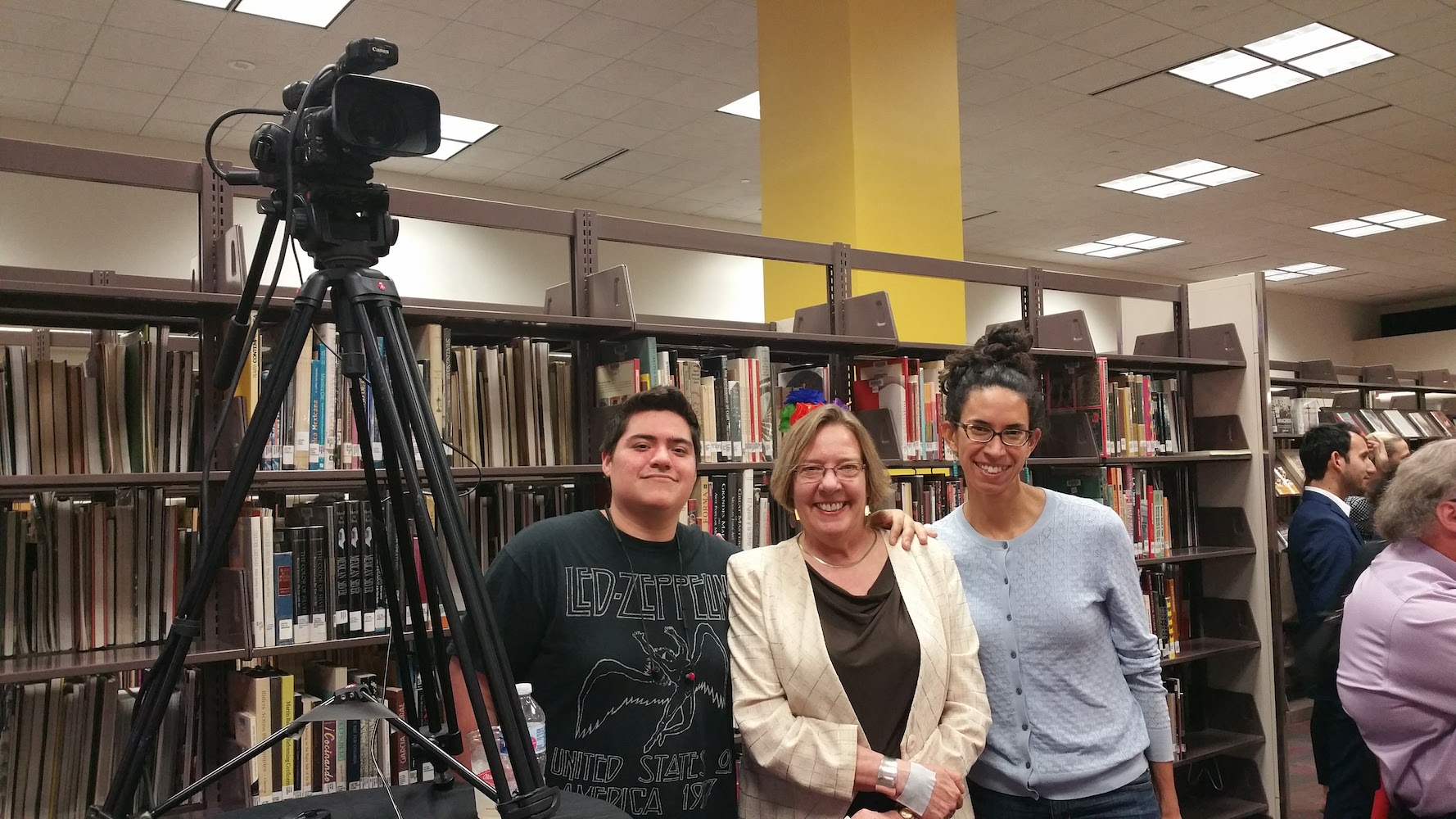
Former NOWCastSA intern Trey Herrera, executive director Charlotte-Anne Lucas, and former NOWCastSA intern Maria Gardner Lara at San Antonio’s Central Library. (Courtesy: Charlotte-Anne Lucas)
A library
When NOWCastSA was dreamt up in San Antonio, one of the people on the advisory board was a librarian. And since 2010, that digital newsroom’s home has been San Antonio’s Central Library.
The publication has office space in exchange for livestreaming library events, “like a local C-SPAN,” the site explains on its about page.
The building the non-profit’s in is also a hub for the community, a cooling station in the summer, a daytime refuge for people without homes, and a resource.
“Being in that building is extraordinarily wonderful,” said executive director Charlotte-Anne Lucas.
NOWCastSA works with paid interns, Lucas said, which means it’s also a great place to learn how to find stories.
“In the library, you’re going to find out more about what’s going on in your community than you will in a newsroom.”
Lucas hasn’t worked in the library since the pandemic began. It hasn’t yet fully reopened. But the livestreaming work she did for the library meant people knew her newsroom and what it was capable of when everyone went home.
She was hired to produce several events, adding to NOWCast’s revenue streams.
San Antonio isn’t the only place with a newsroom in a library.
In Boston, GBH has a studio at the Boston Public Library.
In Weare, New Hampshire, a librarian launched a publication after the local paper closed. When that librarian died, volunteers took over and are still publishing.
And in South Dakota, 13 libraries host a news site.
“The symbiosis between journalism and libraries, it’s just huge,” Lucas said.
If a library doesn’t have the space for a whole newsroom, what about …
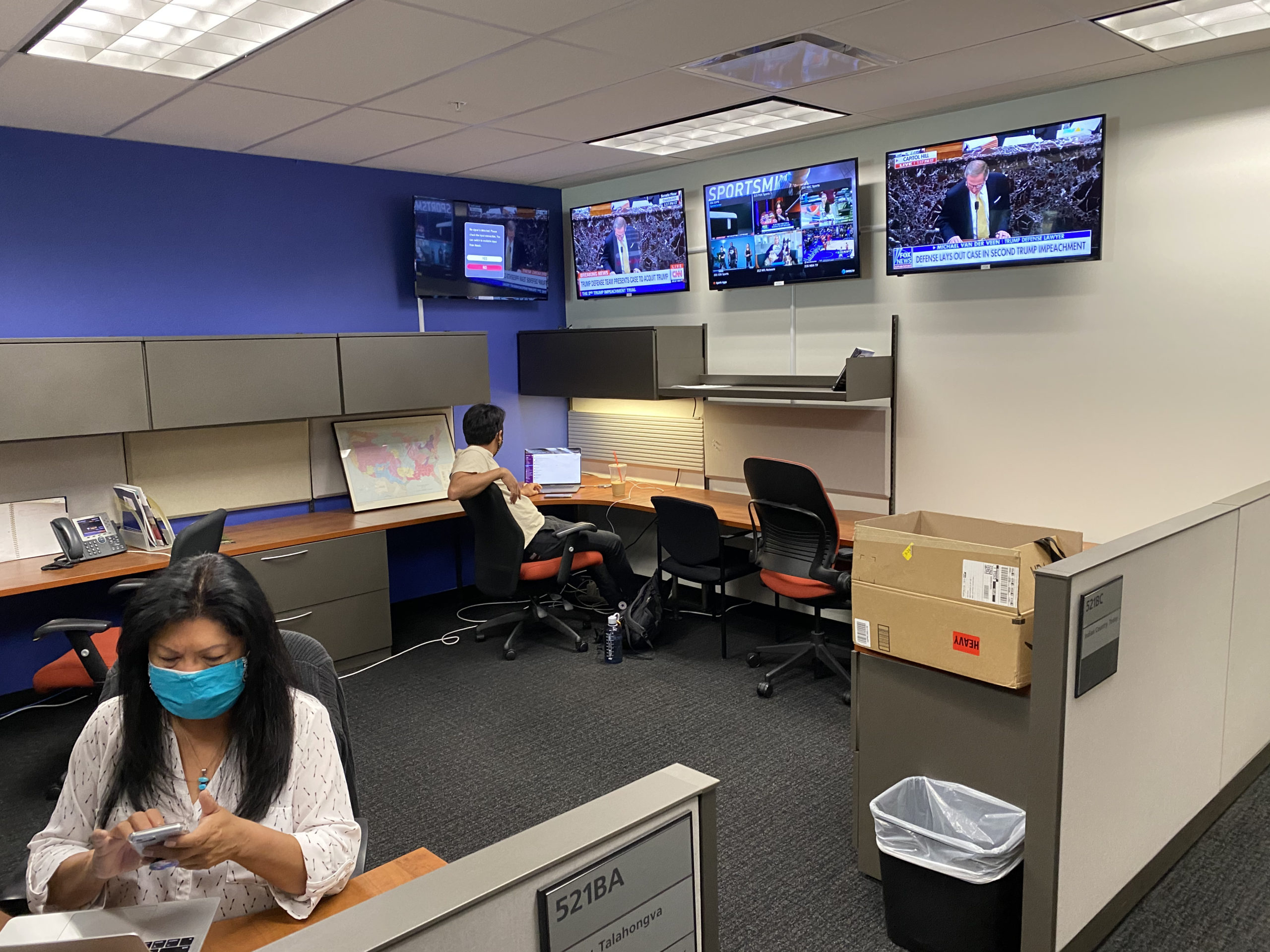
Indian Country Today has newsrooms in three university spaces. (Courtesy: Mark Trahant)
A university
A newsroom inside a university is perhaps the oldest example of a symbiotic relationship between a newsroom and another institution.
The Wisconsin Center for Investigative Journalism’s home is the University of Wisconsin-Madison. Many public radio stations are located at or affiliated with universities. The digital nonprofit 100 Days in Appalachia is housed at West Virginia State University. One of the newsrooms that lost its downtown building, the Orlando Sentinel, recently opened a smaller newsroom at the University of Central Florida. And journalism schools at universities are helping cover communities that lost news, including the Eudora Times in Kansas.
Indian Country Today has three university homes — Arizona State University, ASU’s Washington, D.C. bureau and Alaska Pacific University.
Indian Country Today found its first university home after the 2018 election when it aired an election night broadcast focused on Indigenous candidates. Those six hours of programming were so successful, editor Mark Trahant said, that they started looking for partners with studio space.
“And the dean at Arizona State said, ‘Why don’t you move here?’ and so we packed up and moved the newsroom.”
The university spaces are mostly donated, Trahant said, with five-year agreements. Being on campus means they get to work with stellar interns, two of whom they’ve hired full time.
The broadcast team is now back in the building, and Trahant thinks the digital team might keep working from home to give Indian Country Today space to expand their studios. It’s also showed him what’s possible with a more flexible workforce.
“We couldn’t have afforded a bureau at the top of the world,” he said. “But we can afford one person at the top of the world.”
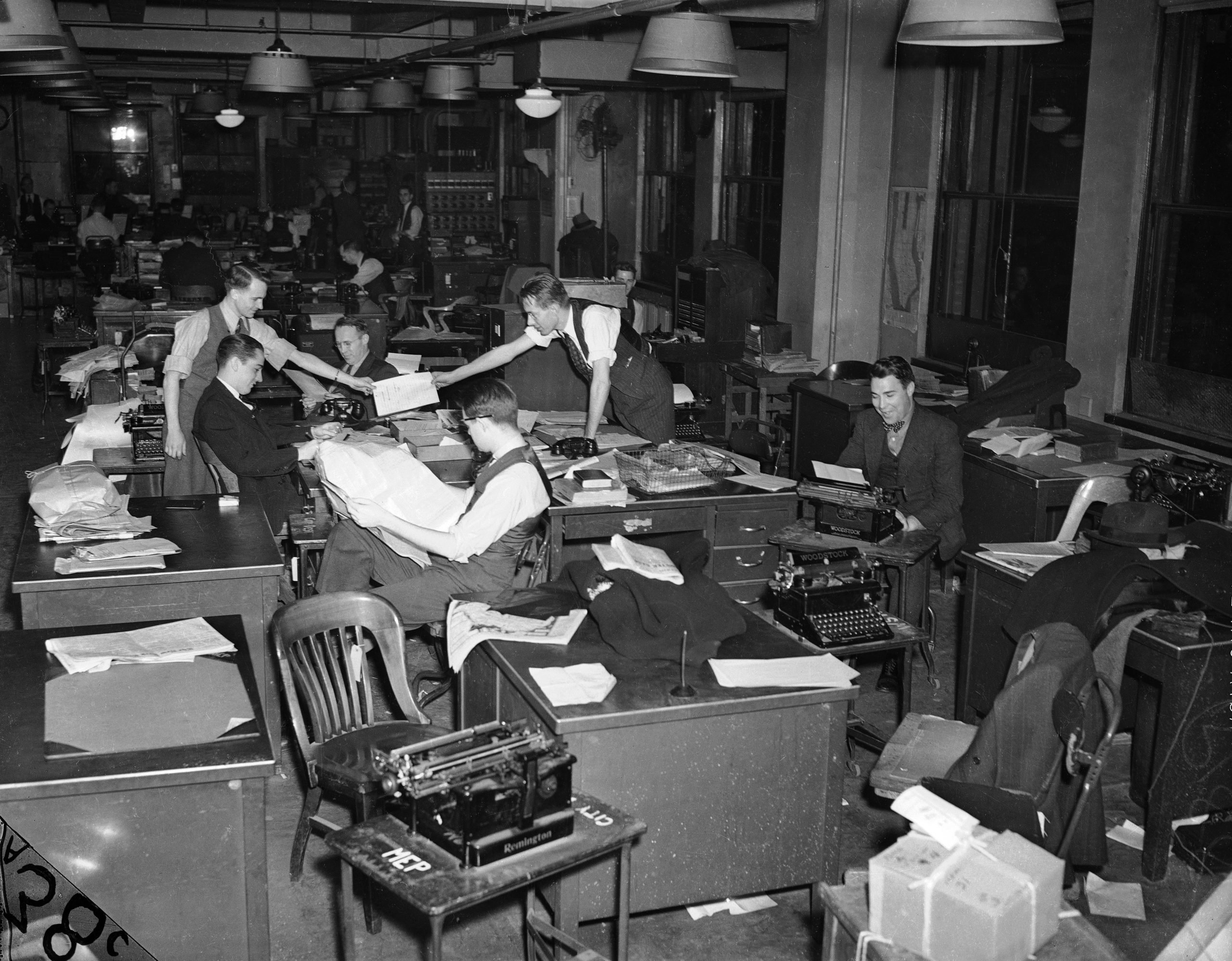
This undated photo shows reporters working at the 383 Madison Ave. office of The Associated Press in New York. (AP Photo/Corporate Archives)
Hold on to that feeling
Most journalists aren’t yet back in their newsrooms, at least not in the numbers they were before the pandemic.
Going back, when that’s possible, offers an opportunity to do something new, something that helps with cost, which “creates these new opportunities to do better journalism,” said Usher from the University of Illinois.
We have to ask questions about safety, Usher said, and if it’s safe for journalists to even be out in a community. In each newsroom, that will look different. And each space requires editorial disclosures and independence, similar to how non-profit and grant-driven journalism works.
There’s an opportunity, too, to better that journalism by better reflecting a community from the newsroom itself. Rethinking spaces after the pandemic means considering diversity, inclusion and equity goals, too, said Kilgo from the University of Minnesota.
Remote and flexible work helps people normally shut out of traditional office spaces, including caregivers and low-income students who can’t afford low-paying internships. As we move back into physical spaces together, it’s important to remember how fast we figured out how to be apart, she said.
“I hope newsrooms will remember that they can adapt.”
We can’t just let that go and rebuild barriers that the pandemic tore down, she said.
“This changes the game.”
And it should.
Read more
What we lost and what we found after a year working from home
After a deadly and devastating pandemic, how do we recover the news?
Some personal news: We have a new series on layoffs and people who left the news during the pandemic

